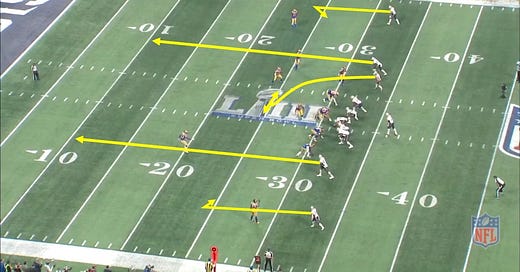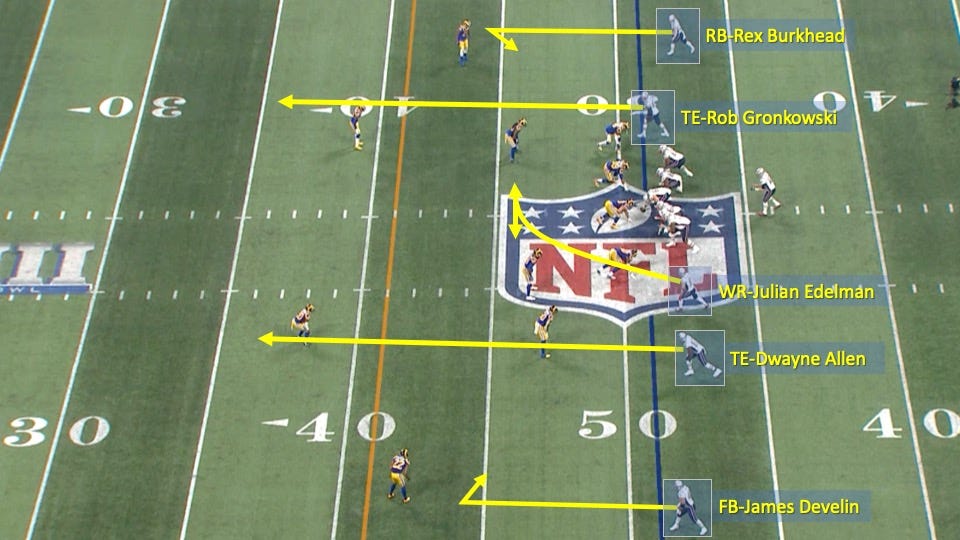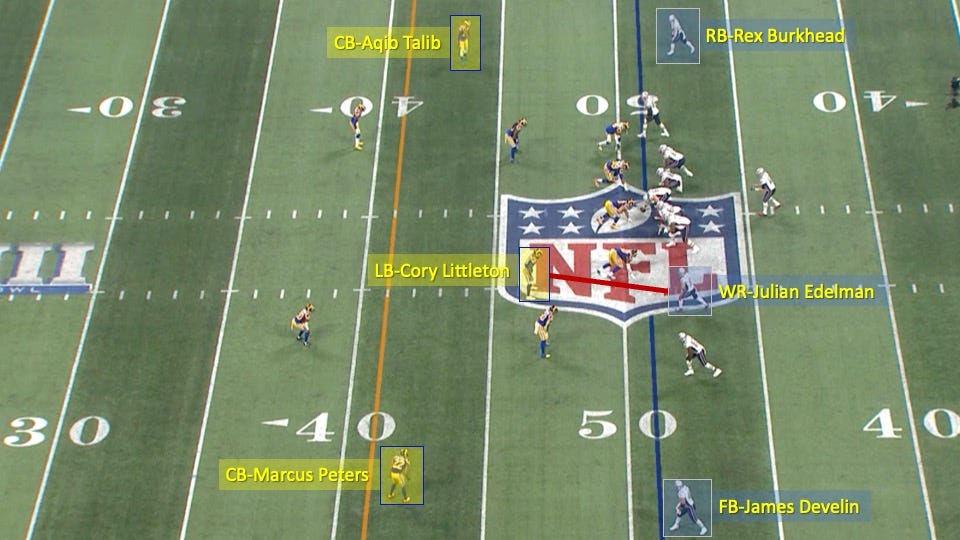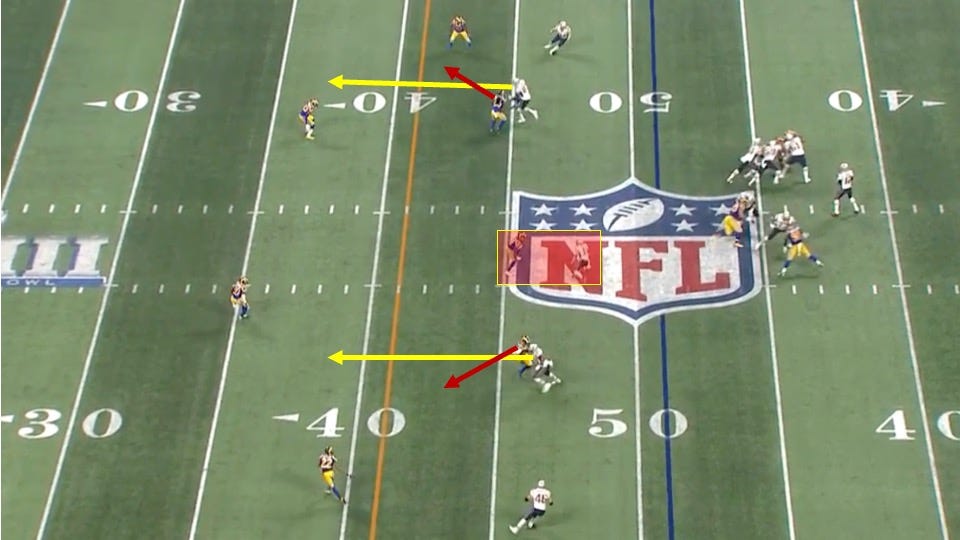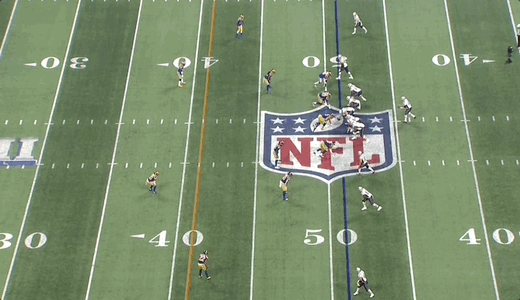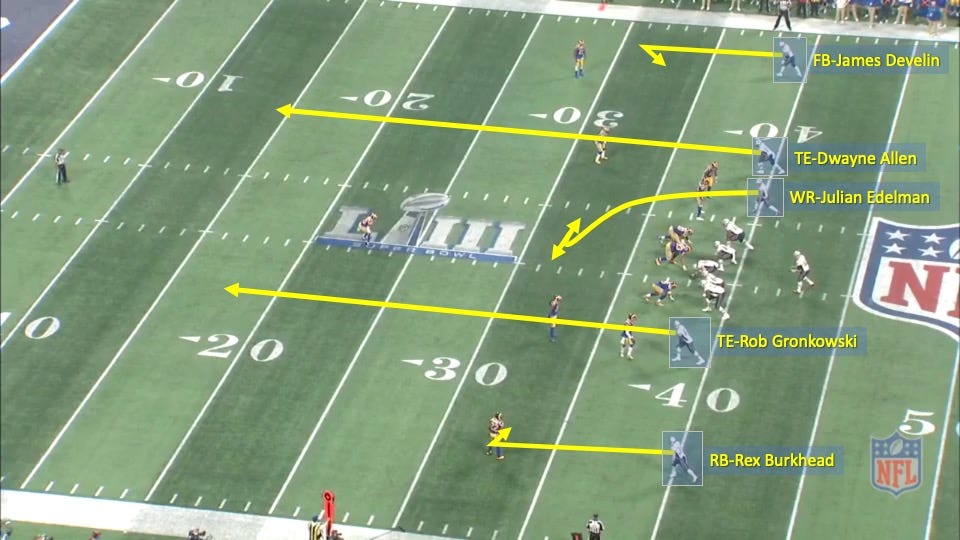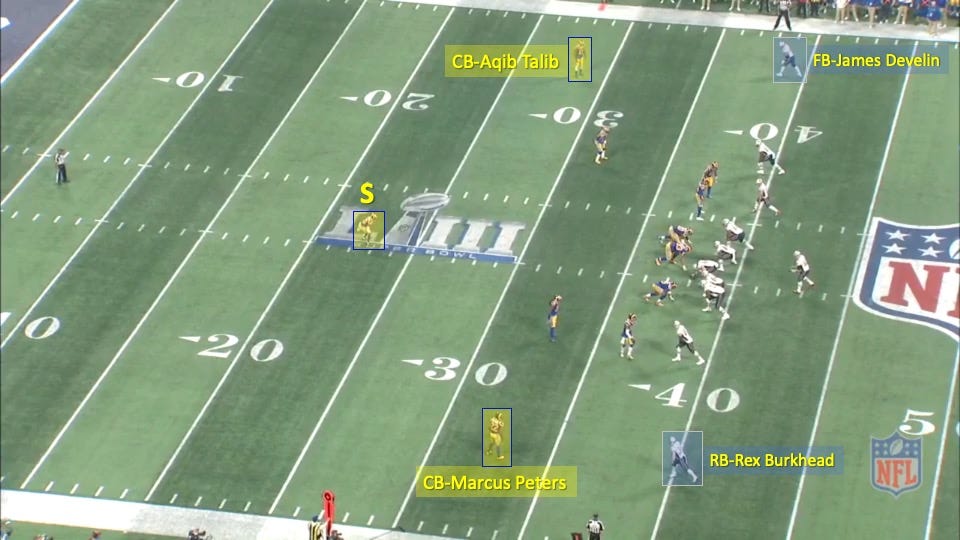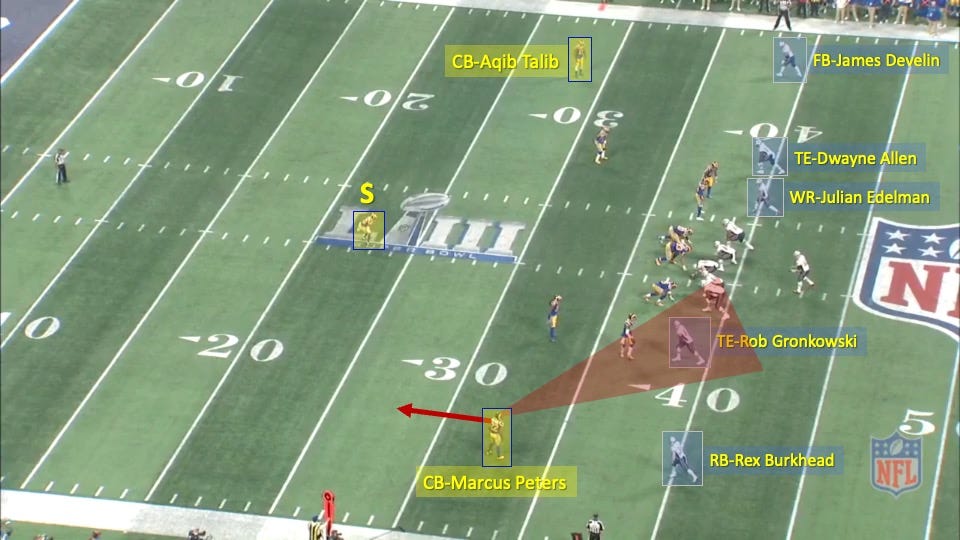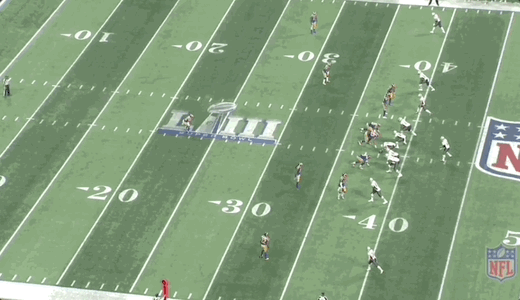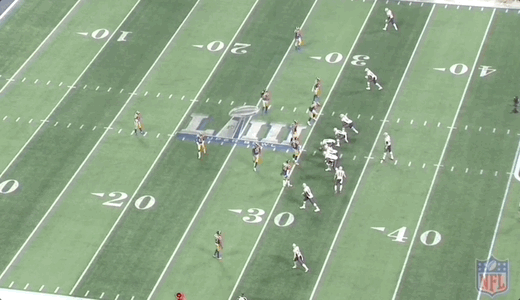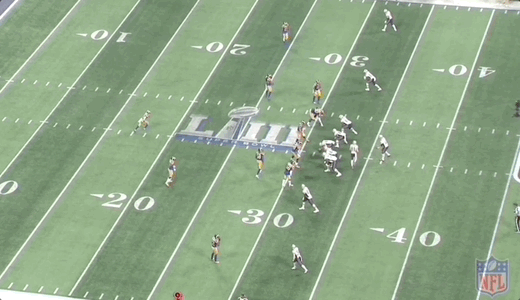“HOSS Y-Juke” or “HOSS Juke” is a play that the Patriots made famous during their dynastic run. It’s a concept utilized out of an empty formation, which means there are 5 routes attacking the defense.
Those routes are hitches on the outside and seams inside (“HOSS”). The “Juke” route is generally run by the #3 receiver, who has a lot of options for what he can do over the middle based on the coverage.
You can see the concept illustrated below:
The play itself has a ton of answers for the quarterback. The outside receivers can convert to go-routes against any type of press coverage or sitting corners. The seams can be run upfield vs. single-high or bend inside vs split-safety looks. Against Tampa-2, they can convert to curls.
Receive breakdowns like this directly in your inbox by subscribing here:
The receiver running the juke route in the middle will react based on his defender’s leverage, either taking it inside or outside. Against Tampa-2 or if he’s uncovered, he can sit in the coverage void.
It’s a great play to run against just about any defense. And depending on how the offense distributes its personnel, there are always opportunities for the quarterback to just take his favorite matchup anywhere based on how the defense responds.
Often times, that’ll be the juke since he has more options for how to run his route and because he’ll often be matched up against the Mike linebacker whether in man or zone. As you’ll see on the examples below, that’s not a fair fight.
Probably the best example of how effective this play can be was in Super Bowl LIII between the Patriots and Rams.
New England didn’t piss a drop all game on offense, and if not for one of the best defensive performances in Super Bowl history, they likely would have lost this game. But with the score tied at 3, under 10 minutes remaining, and really nothing working, New England called it 3 straight times on what would ultimately be the game-winning touchdown drive.
The way New England used their personnel was brilliant and put the Rams defense on its heels. The Patriots came out in “22” personnel (2 RBs, 2 TEs) with just 1 wide receiver on all 3 plays. That forced the defense to use their base personnel and bring more linebackers onto the field.
Then the Pats spread them out with empty formations.
Each time, they dressed up the play with a slight variation to the formation. Running back Rex Burkhead motioned out of the backfield on the first two plays and Julian Edelman motioned across the formation on the third. They also flipped the formation from the first snap to the next two to keep the Rams from anticipating identical plays.
Ultimately, Burkhead and fullback James Develin were the outside receivers to either side each time:
On a night where Rams Defensive Coordinator Wade Phillips’s disguises were giving Brady and the Patriots problems, this approach allowed New England to know what the coverage was pre-snap.
On this first play, it was clear that the Rams were in zone because cornerbacks Aqib Talib and Marcus Peters, L.A.’s best coverage defenders, were aligned over Burkhead and Develin, a running back and a fullback. Inside, the Rams were left with a linebacker (Cory Littleton) on the only receiver on the field, Julian Edelman:
The Rams would ultimately play quarters coverage here. Their Sam and Will linebackers widened with the seam routes before getting to the flats to help on the outside receivers. That left Edelman isolated inside against Littleton with a ton of space to run his juke route:
The Patriots picked up an easy 13 yards:
On this next play, the Patriots flipped the formation before running the exact same play:
The Rams would alter their coverage and play single-high, but they still aligned with Talib and Peters on the outside:
The linebacker over Edelman jammed him at the line and locked on before he could get into his juke route. So Brady worked a different area of the concept, the hitch-seam to his left.
Focus on Marcus Peters at the bottom of the screen. He had his eyes inside making sure to keep Gronk in his sights. He gave Burkhead a lot of cushion on the perimeter since he was the lesser receiving threat and so he could be ready to react to Gronk if he went vertical:
Gronk was jammed at the line, disrupting his route, and Peters was able to stay on top of him. But Burkhead was left wide open for an easy 7 yards underneath:
You could see Peters reacting to Gronk’s vertical more than Burkhead’s route there. In the grand scheme of things, this didn’t seem like that meaningful of a play.
But on the very next snap, with the Patriots calling HOSS Y-Juke once again, Peters didn’t want to give up another easy completion to Burkhead. So he played a bit tighter to him:
On this play, however, Gronk wasn’t jammed at the line. That was because Julian Edelman’s motion across the formation got the Rams a little crossed up before the snap:
The result was that Gronk had a free release, and this enabled him to get on top of the underneath defender (a linebacker) who locked onto him late in the slot.
The free release also allowed him to stay on top of Peters, who had started closer to Burkhead at the line of scrimmage and was slower to respond to Gronk’s vertical, making him a non-factor on the throw:
New England ran the same play three straight times and connected on every route in the concept - the juke, the hitch, and then the seam. This was a HOSS Y-Juke teach tape.
The Patriots would score a touchdown on their very next play, and that would prove to be the game-winner.
Dive into over 70 breakdowns like this by getting a Founding Member subscription and accessing our Playbook.

